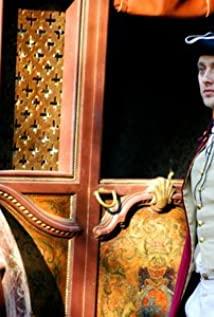This film is based on an unsolved case of a real historical event. In 117 AD, the Ninth Legion, a victorious division of the Roman Empire, was mysteriously destroyed after it invaded England. There are different opinions. The historical authenticity of such a film cannot be avoided. Marshall chose the more mainstream view, that is, the Ninth Corps was surrounded and suppressed by the local original Picts, and the entire army was annihilated.
Apart from the subject matter, this film has nothing new in terms of plot, it is actually just a chase movie, and the killing scenes in it are bloody and barbaric. If you watch too many western ancient war movies, you will be surprised by this film. In theory, this film is also used to relieve boredom, but unfortunately it is a bit slow, and there are not many scenes of horseback riding on the discussion of history.
About Captain Hundreds
Centurion (Centurion, English Centurion) has always been a very important rank in the Roman army. The history of the establishment of the Centurion can go back to the Etruscans (Etruscans), the Romans (Romans), during the Serviers period (6th century BC). The original centurion was chosen by the soldiers of the team. Later Centuries were appointed by Roman tribunes and then approved by legionary commanders. In the early imperial period the Centuries were appointed by the consuls of the Roman provinces. But this appointment was made on the recommendation of the Legion Commander and Tribune. Even the Roman emperor could interfere in the appointment of a centurion if the candidate had influential friends in high places.
Centuries are often reminiscent of being promoted to this position from the ranks of ordinary soldiers due to merit. But that's just one way to pick the Centurion. Soldiers of the Roman Guard could also be appointed centenarians of ordinary legions after serving the required 16 years. Even civilian cavalrymen like equites can apply directly for the post of captain of the centenary. To be a centurion is not only to be a good soldier, but also to have a lot of knowledge. Because the centurion not only has to read and write orders, but also sometimes has some political and diplomatic responsibilities.
The highest level of centurion captains is primus pilus, "the first spear", that is, the captain of the first centurion (double-organized centurion) in the first brigade (that is, the first legionary cohort in the Roman War). This rank is generally reserved for each "first spear" centenarian for only one year. After a year, the 100-man captain will either retire or be appointed as a barracks commander, mainly in charge of equipment and transportation. Such "first spear" centenarian captains can always be promoted, for example, as fleet commanders, commanders of the Roman Guard, and even governors (only provinces guarded by auxiliary arms).
In the early imperial period, a legion generally had 59 centurion captains (9 brigades, each with 6 centurions). One of each of the five double-sized centurions in the first brigade. The remaining 54 are allocated to 54 standard-sized centurions. Each centurion has a number of non-commissioned staff officers to assist him in his day-to-day work: a signal trooper (signifer), who also acts as a treasurer, a deputy captain (optio), and the honored centurion's replacement who also acts as a "training officer". Personal escort (tessarius), the captain's bodyguard.
The centurion was easily seen in the legion, his armor was silver, the calf had two greaves, and the helmet was adorned with a feather headdress. The method of the centurion's attire is also very special, the sword is on the left, the dagger is on the right, and he also holds a shield. The centurion's job was to train soldiers, and the way to keep them trained was to whip the soldiers with a special cane, which was popular at the time.
View more about Centurion reviews











